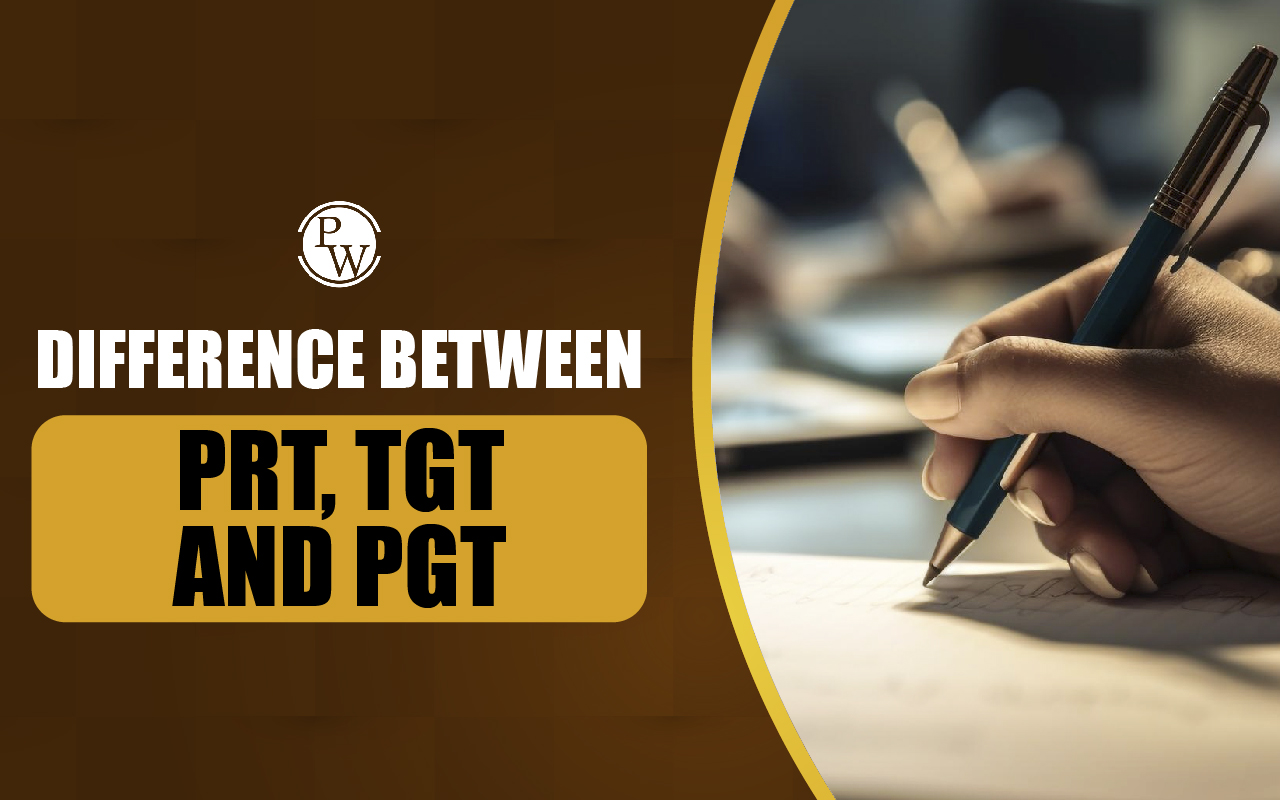

If you’ve ever wondered what’s the difference between PRT, TGT, and PGT teachers, you’re not alone. These terms are frequently seen in teaching recruitment notifications, but their meanings often confuse aspirants. In this guide, we’ll clearly explain the full forms, eligibility, teaching level, and qualifications for each type of teacher. By the end, you’ll know exactly which teaching level matches your qualification and career goal.
What is PRT? (Primary Teacher)
PRT Full Form: Primary Teacher
PRT teachers handle classes 1 to 5, focusing on building foundational skills in subjects like language, math, and science.
Eligibility Criteria
-
Must have completed Diploma in Elementary Education (D.El.Ed) or Bachelor of Elementary Education (B.El.Ed)
-
Should have qualified the CTET Paper 1 exam (for Classes 1–5)
Responsibilities
-
Teach all basic subjects at the primary level
-
Develop interactive learning habits among children
-
Focus on language, writing, and comprehension skills
Ideal For
Candidates passionate about teaching young children and shaping early learning experiences.
What is TGT? (Trained Graduate Teacher)
TGT Full Form: Trained Graduate Teacher
TGT teachers are eligible to teach classes 6 to 10 in schools affiliated with CBSE, ICSE, and state boards.
Eligibility Criteria
-
Bachelor’s degree in a relevant subject
-
Bachelor of Education (B.Ed.)
-
Must qualify CTET Paper 2 (for Classes 6–8, depending on the recruitment)
Responsibilities
-
Teach subject-specific lessons (e.g., English, Science, Maths)
-
Prepare students for board exams at the secondary level
-
Assess performance and develop critical thinking in students
Ideal For
Graduates who enjoy subject specialization and teaching middle to secondary-level students
What is PGT? (Post Graduate Teacher)
PGT Full Form: Post Graduate Teacher
PGT teachers teach Classes 11 and 12 — the higher secondary stage — focusing on advanced subjects.
Eligibility Criteria
-
Master’s degree in the teaching subject
-
Bachelor of Education (B.Ed.)
-
Must qualify relevant TGT-level eligibility first (in some boards)
Responsibilities
-
Teach specialized subjects (e.g., Physics, Economics, History)
-
Prepare students for competitive exams and board results
-
Provide academic guidance for career development
Ideal For
Postgraduates who want to teach senior secondary students and have in-depth subject mastery.
Difference Between PRT, TGT, and PGT Teachers
The roles of PRT (Primary Teacher), TGT (Trained Graduate Teacher), and PGT (Post Graduate Teacher) differ significantly in terms of teaching levels, qualifications, and responsibilities. Understanding the difference between PRT TGT and PGT is crucial for aspiring teachers to determine the appropriate career path and prepare accordingly. Below is a detailed comparison of these roles:| Key Difference Between PRT TGT and PGT | |||
|---|---|---|---|
| Criteria | PRT (Primary Teacher) | TGT (Trained Graduate Teacher) | PGT (Post Graduate Teacher) |
| Full Form | Primary Teacher | Trained Graduate Teacher | Post Graduate Teacher |
| Teaching Level | Classes 1 to 5 | Classes 6 to 8 | Classes 11 and 12 |
| Educational Qualification | Diploma in Elementary Education (D.El.Ed) + CTET Paper I | Bachelor’s Degree + B.Ed + CTET Paper II | Post Graduate Degree + B.Ed |
| Subjects Taught | General Subjects (all basic subjects) | Specific Subjects (Mathematics, Science, Languages, etc.) | Specialized Subjects (Physics, Chemistry, etc.) |
| Responsibilities | Teaching foundational concepts, and basic life skills, preparing lesson plans | Imparting deeper subject understanding, mentoring students, and extracurricular activities | Teaching advanced concepts, preparing students for board exams, guiding research |
| Entrance Exam | D.El.Ed Entrance Exam | B.Ed Entrance Exam | B.Ed Entrance Exam |
| Eligibility Test | CTET Paper I | CTET Paper II | Post Graduation with CTET |
| Career Scope | Primary Schools | Middle Schools | Senior Secondary Schools |
| Salary Range | ₹25,000 – ₹40,000/month | ₹30,000 – ₹50,000/month | ₹40,000 – ₹60,000/month |
| Work Complexity | Moderate (foundational teaching) | Intermediate (subject-specific teaching) | High (advanced and specialized teaching) |
Which Classes Do PRT, TGT, and PGT Teachers Teach?
-
PRT Teacher: Primary (Classes 1–5)
-
TGT Teacher: Middle to Secondary (Classes 6–10)
-
PGT Teacher: Senior Secondary (Classes 11–12)
Note: A teacher with an M.Sc. in Physics + B.Ed can apply for PGT Physics posts but not for TGT Science.
Salary Comparison (Approximate Pay Levels)
| Teacher Type | Average Pay (INR/month) | Pay Level |
| PRT | ₹35,000 – ₹45,000 | Level 6 |
| TGT | ₹45,000 – ₹55,000 | Level 7 |
| PGT | ₹55,000 – ₹65,000 | Level 8 |
How to Become a PRT, TGT, or PGT Teacher?
Step-by-Step Path
-
Choose your target level (Primary, Secondary, or Senior Secondary)
-
Complete the required qualification (D.El.Ed / B.Ed / PG + B.Ed)
-
Qualify CTET or State TET as per your target level
-
Apply for teaching exams like KVS, NVS, DSSSB, or EMRS
Which One Should You Choose?
| Goal | Best Option |
| Want to teach kids | PRT |
| Prefer subject teaching | TGT |
| Love in-depth subject discussion | PGT |
The teaching profession in India is divided into PRT, TGT, and PGT, which ensures that students receive tailored education throughout their academic journey. Each level demands specific qualifications and expertise, catering to the unique needs of students. Aspiring educators should carefully consider the Difference Between PRT TGT and PGT to make informed career choices and contribute meaningfully to the field of education.
Difference Between PRT TGT and PGT FAQs
What is the full form of PRT, TGT, and PGT?
-
PRT – Primary Teacher
-
TGT – Trained Graduate Teacher
- PGT – Post Graduate Teacher